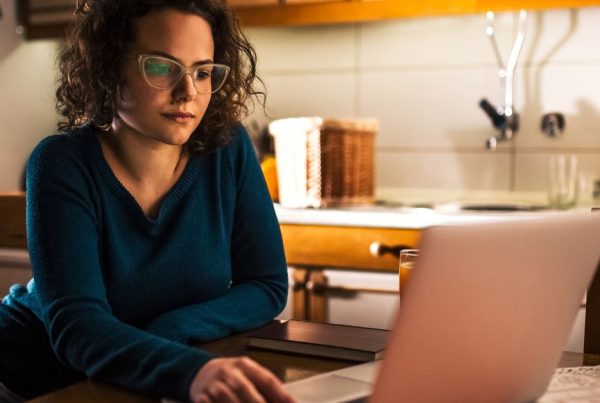
Effective client communication is crucial for the success of architectural projects, as it ensures alignment between client expectations and the final design. Emerging interactive design tools, such as digital models, virtual walkthroughs, and immersive presentations, are transforming the way architects engage with clients. By leveraging these technologies, architecture firms can enhance client understanding, foster collaboration, and ultimately achieve better project outcomes.
The Importance of Effective Client Communication in Architecture
Effective communication plays a pivotal role in the success of architectural projects. It promotes understanding, enhances collaboration, and ensures a smooth flow of information among various stakeholders such as architects, engineers, contractors, subcontractors, suppliers, and clients. Clear communication is key to managing client expectations and maintaining customer satisfaction (source).
In architecture, communication can be divided into two main aspects: technical and social. Technical communication involves providing clients with details like building plans, design decisions, and the tools used for executing these schemes. On the other hand, social communication focuses on building trust with clients, which helps eliminate doubts about the project and makes it easier to explain technical details (source).
One of the common pain points in client communication is the misunderstanding about the scope of design services. Clients often have a poor understanding of what they are getting, which can lead to frustration and confusion. For instance, clients may not realize the difference between a reduced fee service that covers only drawings and planning versus a full service that includes more comprehensive project management (source).
Another challenge is the communication gap between architects and clients. Architects sometimes fail to guide their clients’ expectations accurately and may overpromise regarding the project schedule, budget, materials, or furnishings (source).
Improving communication can lead to better project outcomes and increased client satisfaction. Clear and effective communication ensures that project objectives and requirements are properly conveyed to all parties involved, reducing the likelihood of misunderstandings or errors. It also facilitates timely decision-making, which can prevent delays and cost overruns (source). By establishing well-defined communication channels and engaging with potential clients early on, architecture firms can build a foundation of trust that leads to smoother project execution and happier clients (source).
Utilizing Digital Models for Clearer Communication
Digital models are revolutionizing the field of architecture by offering a three-dimensional, realistic representation of architectural designs. These models enable architects, stakeholders, and clients to visualize proposed buildings or structures in a way that traditional two-dimensional drawings cannot (source). They allow for the visualization of various scenarios, enabling changes in the design, enhancing marketing strategies, lowering lead times, and reducing the need for extensive instructions (source).
One of the key benefits of using digital models in client presentations is the ability to create an interactive and immersive experience. Clients can explore the design from different angles, get a sense of scale and proportion, and understand complex architectural concepts more easily. This interaction not only makes the presentation more engaging but also helps clients provide more accurate feedback, which can lead to better design outcomes (source).
Several successful projects have demonstrated the value of digital models in improving client understanding and engagement. For instance, the use of artificial intelligence in architecture has streamlined early-stage planning and improved architectural mapping. This technology has optimized sketching, streamlined compliance, enhanced urban planning, and improved construction safety (source). Another example is robotic fabrication, which offers greater flexibility, precision, and efficiency in realizing complex and innovative architectural forms. This technology enables the creation of customized and intricate designs that would be difficult or time-consuming to achieve through traditional methods (source).
Digital models, such as massing models, are particularly useful in the early design stages. They help architects explore a building project’s shape, form, and layout, influencing environmental and structural considerations. These models are also beneficial for communicating ideas to stakeholders, as they focus on critical architectural decisions without getting bogged down in details (source).
In conclusion, digital models are a powerful tool in architecture. They provide a comprehensive understanding of architectural designs and enhance client engagement through interactive presentations. Utilizing these technologies can ultimately lead to more successful architectural projects. Minute7, with its time tracking and expense reporting solutions, can be a valuable tool in these processes, helping architects efficiently manage their time and resources while working on these complex digital modeling tasks.
Virtual Walkthroughs and Immersive Presentations
Virtual walkthroughs and immersive presentations are transforming the architectural landscape by providing clients with a realistic sense of space, layout, and aesthetics. These tools bridge the gap between technical design and real-world visualization, enabling clients to experience the proposed design as if they were physically present within the space (source).
Virtual reality (VR) solutions are revolutionizing the design process by allowing architects to create immersive experiences. This not only enhances the design process but also improves communication with clients, helping them make informed decisions about the construction project (source). VR walkthroughs provide a realistic virtual tour of the design, enabling clients to better understand the design concepts and visualize the final outcome (source).
Immersive presentations are also significantly enhancing both internal and external meetings. These presentations eliminate the need for extensive planning and scheduling, offering a more natural and immersive experience that makes stakeholders feel as if they are in the same room (source). Immersive communication allows clients, partners, and employees to step into a world crafted specifically for them, fostering deeper connections with the project and the architectural firm (source).
Various online presentation tools are available to enhance client engagement and understanding. These tools enable architects to build presentations with engaging elements such as images, animations, and interactive content, making the experience more interesting and informative for the audience (source).
In conclusion, virtual walkthroughs and immersive presentations offer architects an effective way to improve client communication. By utilizing these tools, architects can provide clients with a better understanding of design concepts and project progress, ultimately leading to better project outcomes. With Minute7’s time tracking and expense reporting solutions, architectural firms can efficiently manage their resources while focusing on leveraging these advanced tools for superior client communication.
Leveraging Interactive Design Tools for Superior Client Communication
In the rapidly evolving field of architecture, the integration of interactive design tools such as digital models, virtual walkthroughs, and immersive presentations has become indispensable. These tools not only enhance client communication but also pave the way for more successful project outcomes. By providing a more tangible and immersive experience, clients can better understand and engage with the architectural vision, thus ensuring that their expectations are met.
Digital models allow for a comprehensive visualization of architectural designs, enabling clients to explore and interact with the project from various angles. This level of engagement fosters better feedback and more informed decisions, ultimately leading to refined and optimized designs. Virtual walkthroughs and immersive presentations take this a step further by offering a realistic sense of space and aesthetics, allowing clients to experience the design as if they were physically present. These technologies bridge the gap between technical plans and real-world implementation, making complex design concepts more accessible and understandable.
The benefits of such tools are clear: improved client understanding, enhanced collaboration, and more accurate feedback. However, the successful implementation of these technologies requires meticulous time management and resource allocation. This is where Minute7 comes into play. As a versatile time tracking and expense reporting solution, Minute7 helps architectural firms manage their projects efficiently. By integrating seamlessly with QuickBooks and offering easy-to-use web, iOS, and Android apps, Minute7 ensures that architects can focus on what they do best—designing and communicating with clients—while the software takes care of the administrative details.
In conclusion, the adoption of interactive design tools is revolutionizing client communication in architecture. By leveraging these advanced technologies, architectural firms can achieve better project outcomes and higher client satisfaction. Minute7 supports this process by providing robust time tracking and expense management solutions, enabling firms to operate more efficiently and effectively. Explore how Minute7 can enhance your architectural practice by visiting their website.



